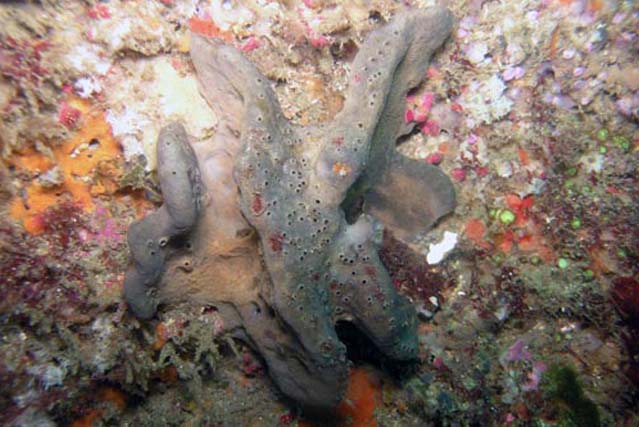| Spongiidae () |
| 100 cm WD (male/unsexed) |
|
sessile; marine; depth range 4 - 100 m |
| Northeast Atlantic and Mediterranean. |
|
Sponge out of thick blade: 0.6 to 2 cm; sometimes cut out or folded up on it, often forming a more or less complete cut. One of the faces, the intern on the specimens out of cut, carries many osculus of small size, rather regularly laid out, towards which converge of small exhaling channels surface. Conules: small size; rather regular. Ectosome often reinforced by an arenaceous network. Composite primary fibers: 5 - 8 cm diameter; with foreign bodies. Secondary fibers: 0.0025 to 0.0035 cm; with sometimes a fine fiber network from 0.0006 to 0.001 cm on the surface. Color: dark gray with more or less dark chestnut. |
| Species very good fair average quality, formerly much used in industry (polishing of the ices). Restricted production; collected at decorative ends (Ref. 363). Association: Often parasitized by the cirripède Acasta spongites (Ref. 363). |
|
Not Evaluated (N.E.) Ref. 123251)
|
| harmless |
|
Source and more info: www.sealifebase.org. For personal, classroom, and other internal use only. Not for publication.

